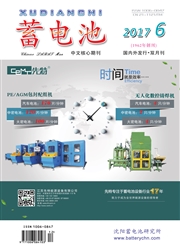

 中文摘要:
中文摘要:
随着汽车消费量的增加,传统汽车导致的石油资源消耗和环境污染等问题日益严重。较传统汽车,以车载电源作为全部或部分动力驱动的电动汽车,具有清洁节能的优势。混合电动汽车(HEV)性价比高,成为国内外汽车领域研究的热点。较其他动力电池,铅酸蓄电池成本较低,性能稳定,依然是混合电动汽车的重要选择。铅酸蓄电池在HEV中已经得到初步的应用,提高铅酸蓄电池的能量密度,成为制约铅酸蓄电池在HEV中进一步应用的瓶颈。国内外学者通过开发合适的添加剂、改进板栅材料、优化电池制备和装配技术,以及制备超细铅粉活性材料等手段来提高铅酸蓄电池的能量密度。本文对HEV用铅酸蓄电池的充放电机制和电池管理系统也进行了一定的探讨。
 英文摘要:
英文摘要:
With the increasing consumptions of vehicles in modern society, oil resources exhaustion problems and environmental pollution caused by conventional vehicles are increasingly serious. Compared with conventional vehicles, electric vehicles powered entirely or partly by batteries are of less environmental pollution and energy consumption. Hybrid electric vehicles (HEVs) have drawn great attention worldwide in the automobile field, due to its good cost-benefit. Lead-acid battery is an important choice for HEVs, due to its low cost and good stability. Compared with other power battery, the lead-acid battery is of lower cost and steady performance, so it is an important alternative for HEVs. Although the lead-acid battery has been used partly in HEVs, it has been a bottleneck of the lead-acidbattery further application in HEVs for its lower energy density. Four approaches have been studied for the improvement of lead-acid battery energy density: development of suitable additives, improvement of grid materials, optimization of battery preparation method and assembly technology, and preparation of novel ultrafine lead powder. In this paper, the charging mechanism and battery management system for the lead-acid battery has been discussed in the application in HEVs.
 同期刊论文项目
同期刊论文项目
 同项目期刊论文
同项目期刊论文
 期刊信息
期刊信息
